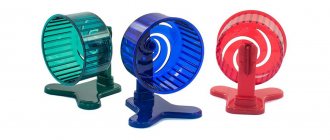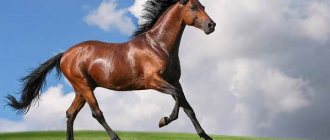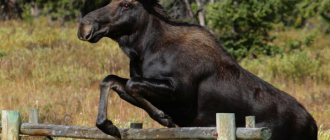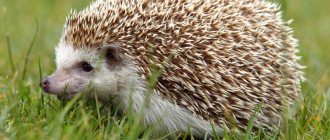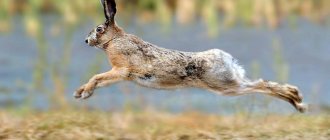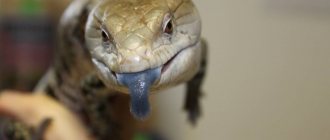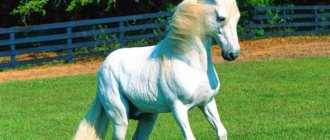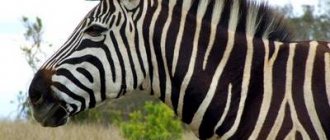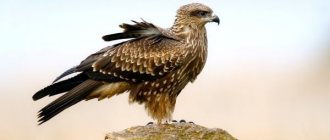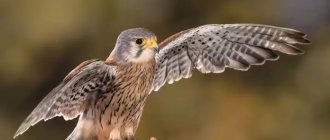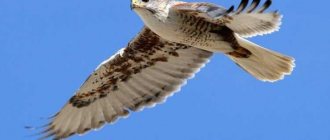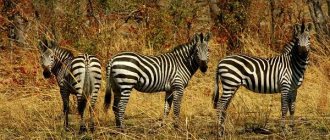The gait is the type of movement of a horse. Translated from French, this word literally means “way of movement.” Every novice rider must understand the types of gaits, because in different situations you need to choose the safest type of movement for the horse and rider.
Horse gait
Types of horse racing
The movements of a horse are usually called gait, which literally means “gait” (French). They can be natural (determined by how the horse naturally moves) and artificial - how a person taught the horse to move.
The term “horse gait” is applied to all types of running and movement of a horse. In order to learn how to ride well, every novice rider must study all types of gaits, since this knowledge will help to understand how a horse moves during a particular type of running, how a rider needs to adapt to his horse, what seat to choose, how to maintain balance.
Natural gaits
One of the most common types of horse movement can be called a slow gait, or step. While walking, she raises and lowers all four limbs to the ground one after another, while changing legs diagonally.
The step of an average horse is about 1.5 m, and the step speed of horses with fast gaits is from 5 to 7 km/h (for walking breeds it is 3.5-4.5 km/h).
The following types of steps are distinguished:
- short (collected) - the marks of the hind hooves are located far from the front;
- medium - the hind hooves can step on the tracks of the front ones;
- wide (extended) - the hind hooves step forward, ahead of the front ones.
When walking, the horse's head is slightly lowered and sways slightly in time with the movement. With a collected step, the horse is no longer so relaxed, it raises its limbs higher; thus, its lumbar part also rises.
Familiarize yourself with the basic rules of horse riding.
With a long, extended step, the horse's head is raised, the movement of the legs is sweeping, and the lower back is extended. Horses that walk with this gait are considered the most flexible. The free step is used at the beginning and end of each workout.
It’s worth mentioning one more natural gait—the jump. When performing it, the horse pushes off simultaneously with its hind limbs in the forward direction. The horses' maximum capabilities are provided by a jump of 2.47 m (the longest recorded jump is 8.3 m).
Lynx
This is an accelerated gait during which the horse moves 2 legs diagonally at the same time. The horse's movements are rhythmic and very beautiful. Trotting is not convenient for all horses.
Important! Moving at an average speed of 16-18 km/h (which is not very fast running for a horse), it can cover a distance of 30-45 km per day. This is important for people in such professions as jockeys, horse breeders, mounted police officers, and circus workers. This style of movement is preferred by trotting horses, for which trotting is the main way of running.
It is worth noting that the trotter is capable of trotting at the same speed as other galloping horses. This gait can be performed at different paces
This style of movement is preferred by trotting horses, for which trotting is the main way of running. It is worth noting that the trotter is capable of trotting at the same speed as other galloping horses. This gait can be performed at different paces.
Hence the different names:
- trot, or shortened trot (sometimes called collected - with a step size of 2 m at an average speed of 14 km/h);
- field, or normal trot - includes a phase of unsupported movement (in this case, the step is slightly longer and the speed is about 20 km/h);
- sweeping (playful) - the hind limbs are ahead of the forelimbs with a step length of 6 m at the maximum speed that trotters can develop (up to 50-60 km/h);
- working trot - this is the name for leisurely running at a speed of 8-12 km/h. At this pace, the horse cannot move constantly; it must periodically take a step every quarter of an hour for at least 5 minutes. Changing gaits will allow the horse to be in good shape longer and not get too tired.
Speaking about the rider's position, trots are distinguished:
- training (the rider sits tightly on the horse);
- lightweight (the person stands up a little while hanging).
It will be useful for you to read about how to properly saddle a horse.
Gallop
This gait involves the fastest movement with leaping movements in three beats. The horse throws out its front and hind limbs simultaneously with a phase without support. This process resembles flying or hanging for a moment in the air.
Galloping (also basting) can occur at three paces:
- short - step about 1.5-2 m;
- ordinary (or kenter) - 3-meter step;
- fast, or quarry - the swing of the limbs is 5-7 m.
A horse gallops at a speed of 15-18 km/h, but during races it can reach speeds of up to 60 km/h (at distances less than 3,000 m) and 55 km/h over longer distances.
Read more about how to properly gallop on a horse.
Race rules
Horse racing is held at hippodromes. It is a huge complex of buildings and stables, and its battlefield is a racetrack circle. In Europe and the West, betting is widespread.
The length of the treadmill is at least 1600 meters. Particular attention is paid to the ground, so the all-season coating ensures the best grip of the hooves on the track even in the worst weather. Around the high-quality prize track there are simpler ones for training. The racetrack circle is divided into quarters of 400 meters, which makes it easy to distinguish between distances of 1600, 2400 and 3200 meters.
A woman dreamed of a horse
Big - achieve success, increase your well-being.
A running herd prophesies a rapid rise up the career ladder, victory in some important matter, or the fulfillment of a cherished dream.
For a woman, a dead horse in a dream is a bad sign, warning of separation from a partner, an outdated relationship. Another interpretation is huge losses that will be difficult to cope with.
Skinny and hungry - disagreements with loved ones due to financial situation, emotional turmoil, unpleasant news from afar.
An unmarried woman dreams of a horse grazing in a meadow with a foal - a long separation from a loved one.
Bites the dreamer - deceit, unexpected betrayal of a loved one.
Buying a young animal is a meeting with a person who was considered long lost
Old - significant losses await.
The horse attacks - quick attacks from others.
Feeding - additional income, or making a small profit.
Riders on horses - easy success in the near future.
For a married woman, riding a horse means possible betrayal.
Speed in harness
Traveling with a cart or cart requires a lower speed limit. Working draft horses usually walk or (very rarely) run at a quiet trot. It is possible to increase the speed without compromising the health of the animal if the traction force does not exceed 7-8% of the live weight.
The speed of a harnessed horse depends on several factors.
- The breed she belongs to. You should not expect the same result from working and riding horses.
- Weight of transported cargo. Accordingly, the increase in luggage weight reduces the speed of movement.
- Type of vehicle. A small, light cart rolls faster than a clumsy cart.
- Quality of the road surface. Driving on bad roads will be quiet. In addition, there are places where you can only travel on horseback.
Varieties of gaits
There are several varieties of gaits. All of them are divided into artificial and natural. The natural group includes methods of moving an animal, which are characteristic of absolutely all horses. This includes the horse’s immediate running styles, which are given to him by nature from birth. In this case we mean:
- step;
- lynx;
- gallop;
- amble.
As for artificial varieties of gait, horses master them through regular training. Most often, such options are used in circus arts or competitions. This group usually includes the following movements of horses:
- passage;
- piaffe;
- Spanish step;
- gallop on 3 legs;
- reverse gallop.
Now let’s get acquainted with different types of gaits in more detail.
Spanish step
One of the most spectacular types of step is the Spanish or circus step. Such a special skill can only be achieved through long, hard training and contact with the animal. It is necessary to maintain a connection with your horse, otherwise it will be impossible to achieve full performance from the animal while performing tricks.
The Spanish step differs from other gaits in the peculiarity of the placement of the front legs . While the hind legs walk as usual, the front legs alternately rise and stretch. At the same time, they lower smoothly and without bending. This is a technique of aerobatics, and complete synchronization of the horse and rider. However, it will be useless for those who practice only sport riding.
Basic rules of horse riding
Riding rules help reduce the rider's physical stress. They are as follows:
- Before starting the movement, the horse is “collected” (balanced) - bring your legs under the body and give in the head at the poll. Move your torso forward from the waist, increase the pressure of your legs and slightly tighten the reins;
- when moving in a straight line with the legs and reins, the horse is held straight; if it deviates, it is controlled using unilateral movements of the leg, pulling the reins on the opposite side of the deviation;
- the reins are pulled tight enough to feel the connection between the hands and the bridle;
- Do not use sudden movements unnecessarily.
Rules of conduct with a horse and installation:
- do not forget about common sense;
- a horse is a large animal that can intentionally or unintentionally cause damage to health, so safety should always come first;
- before you calmly go “at a walk” for a walk, you will need at least 10 riding lessons;
- you should not use trot and gallop gaits after the basic 10 lessons;
- You will need to learn the rules of falling and tuck.
Clothing is part of the rider's equipment. Traditional costumes consist of elastic trousers, leather chaps, a comfortable jacket made of soft fabric, long gloves and a helmet. The style that takes its origins from their equestrian uniforms is called derby. It's great for casual wear.
Classic set and types of clothing for riders:
- redingote - a long jacket;
- breeches - short trousers;
- chaps - boots;
- Amazon - women's costume;
- spurs (optional);
- helmet (helmet);
- cylinder - headdress for men;
- tailcoat - clothing for men.
Russian companies do not produce riding clothes, but they can be ordered from the studio. Thick knitwear is used for trousers. Seamless models are preferred, but if this is not possible, seam treatment is required to prevent chafing of the skin while driving
Pay attention to the specific cut of the trousers, which ensures a comfortable fit for the rider in the saddle
There are no uniform requirements for riding clothing; the cut of the uniform is dictated by convenience. For safety reasons, you will need a helmet; for convenience, good leather gloves that will protect the skin of your hands from mechanical damage from the reins.
There are three basic rules for galloping on a horse. They are also the three main conditions for learning how to put a horse into this gait.
- The right horse. This factor is the key. The animal must have a soft step and a comfortable fit. It must not only feel its rider well, but also be able to quickly carry out his commands. It is also important here that the horse can carry itself and go uphill with ease, and for this it needs stable limbs, especially the hind legs. Composure and balance are the main conditions for the landing of the animal to be successful and safe.
- A complete set of correctly selected ammunition. Without this, it will be impossible to raise the animal into a gallop with the correct execution of the technique. Therefore, it is necessary to ensure that this equipment includes a neck strap, bridle, cord, gog and saddle.
- The right place to train. When an animal gallops in an inconvenient training location, the gait technique is disrupted. Therefore, it is necessary to choose closed areas, with a large area and without sources of extraneous noise.
It is also necessary to follow the basic rules for transferring a horse from one gait to another. After all, this is the only way to send him from a trot to a gallop and back. The fact is that it is the accelerated step (trot) that is the variant of movement that precedes the gallop.
- Before you raise your horse into a gallop, you need to make sure it is ready. If the animal walks briskly and evenly, it is ready for this, but if it is sluggish and relaxed, then the time has not yet come for a gallop.
- The rider sits deeply in the saddle and with force pulls his left leg in front and up onto the girth, and with the opposite hand onto the back.
- With your right hand you pull the reins, but at the same time, on the left side, you slightly loosen it.
This procedure is performed when transferring the animal into a left-sided gallop. For the right-hand gait, all movements are performed with opposite hands and in other directions.
If the animal walks correctly, then all that is required of the rider is to maintain the leg in the given position.
If the horse was inexperienced or was not ready for the transition, then instead of rising to a gallop, it could go into a fast trot. In this case, it is transferred to the classic gait of this type, and after a couple of circles in the paddock, the attempt to rise into a gallop is repeated.
This type of riding, like galloping, is really simple and convenient for the animal and the rider, but only on the condition that they are both ready for such riding and have enough knowledge and practical experience.
Original ambling style
This special style is indeed quite original; it is not used for all horses; when assessing a gait, the presence of an amble is highly valued by judges. To the inexperienced observer, it may seem that the amble is a variation of the trot, but it is not. During the ambling gait, the horse simultaneously brings out the left hind and left front legs, then the pair to the right side. It can be noted that the horse's body is not in the most stable position, so the rider must be careful when passing through uneven terrain, running over obstacles and when turning.
During ambling, the correct step length is much shorter compared to trotting, but the pace is higher, that is, more steps are taken per minute. As for speed, the average performance when ambling is 1 km in two minutes. Pacers, which is the name given to horses that are characterized by this type of gait, can walk about 100 km in this style in 1 day. At the same time, changing a style to another is an almost impossible task for them. It is also worth saying that pacers are not used in heavy work, for example, they do not transport carts with cargo.
A distinctive feature of the amble is that it is extremely difficult to develop; only the most experienced and skillful riders who have already built their careers in equestrian sports can do this.
From theory to practice: how to learn to ride a horse?
Horse Meet and Greet
Training horses are quite loyal to new riders and do not show aggression. If you are learning to ride a young owner's animal, try to have the owner with you during the first contact.
Gently pat the horse's neck, lightly patting it, and stroke it. Horses love such caresses and respond with friendliness. Aggressive behavior in domestic or training horses is extremely rare. This usually happens after receiving a negative experience from a person.
Sometimes an animal can behave unfriendly because it has health problems, is spoiled, or is so trained to communicate with “strangers.” In a poorly tuned animal, the ears are pressed back or erect, the legs are tense, the tail and head are raised up. Ears are also usually raised when eating and asking for treats.
Stroke the horse, saying kind words, until it relaxes and lowers its ears. These representatives of the animal world are sensitive to mood and timbre of voice.
Complementary foods can only be used with the permission of the instructor. Usually this type of taming is not used, but horses love sweets: dried fruits (dates, dried apricots), bread, sugar, watermelon, red carrots. You can purchase specialized complementary foods at a horse supply store.
Turn your back to the horse, press against the neck; if you want to show affection, throw the reins back. If this is done in the traditional way with a sharp jerking movement, the horse will react negatively.
Landing
When boarding, you can grab the mane at the withers; this is convenient and also not painful for the horse, since there are no nerve endings there. It is not recommended to hold onto the saddle due to the risk of it overturning. Pull the reins and grab it at the same time as the mane.
Place your left foot in the stirrup, jump up, holding the mane, and cross your right leg. Place your foot on the second stirrup and tighten the reins. You need to stay in the saddle with your thighs. Avoid sudden movement of the reins. Many horses are not used to this, so they may react harshly to painful movements of the reins and bridles.
Horses move if the rider makes characteristic movements or encourages her with his feet.
Where to begin?
Many people, even if they have a desire to learn how to ride a horse, are afraid of this type of leisure and sport. To get rid of complexes, it is better to visit specialized institutions where professional trainers teach horse riding.
Amateur equestrian sport is one of the best ways to relieve emotional stress.
"Golden Age"
Anyone can acquire horse riding skills; at any age, the skills will help increase physical activity and maintain natural physical fitness. Children learn skills especially quickly, but children's training requires the work of an experienced trainer to eliminate the rather high risk of injury.
Age is no barrier to equestrian sport
It's easiest to teach children how to ride, but this requires a good instructor to ensure safe training.
Horseback riding as a culture developed among different peoples in parallel and was divided into two types: the use of horses without prior training and targeted methodological training of the horse, which ultimately facilitated the execution of the rider’s commands.
Getting to know the horse and emotional contact is an important learning point.
Eastern peoples typically use the first method; they practice riding bareback horses. This is also typical for Russia - on farms, in Cossack settlements, among riders who independently learned to control a horse. It is worth noting that those innate riders who intuitively know how to ride a horse adhere to unspoken rules for controlling the animal’s behavior, seating, and movements while riding.
Horseback riding through the passes of the North Caucasus
Horse riding lessons
In our time, trainers also use elements or a complete methodology of artificial riding. Due to the serious training of the horse, when a beginner sits in the saddle, he can feel completely safe.
The breed of the horse does not matter
For this reason, the choice of horse breed does not matter. All training horses are trained in classical riding and calmly obey the instructor
As a rule, if basic precautions are taken during training, it is impossible to fall, and the horse behaves calmly and comfortably for the rider
We invite you to familiarize yourself with the Dream Interpretation: losing and looking for your shoes || Why find boots in a dream?
The largest hippodromes in Russia
There are hippodromes in almost all cities. Most are small, but a few racecourses host international-level horses and riders.
Central Moscow Hippodrome "TsMI"
One of the oldest and most prestigious hippodromes. The fastest horses in Russia and Europe meet at the Moscow Hippodrome.
Ufa hippodrome "Akbuzat" in Ufa
Today “Akzubat” is a huge modern equestrian sports complex. On the territory of the hippodrome there are: a modern grandstand, a three-story stable and a large veterinary center.
Horse gaits: types and characteristics, which running is the fastest
The horse is a magnificent and graceful creature. All her splendor is not only the smooth lines of the silhouette, but also her gait. A walking, galloping, running horse is mesmerizing, all movements are performed so smoothly and clearly. All modes of movement available to a horse are called gaits. It is with the study of the technique of each of them that work with this animal begins.
What is a horse's gait?
From French the word “gait” is translated as “walk, gait.” In other words, this is a generalized name for all types of forward movement of the horse.
When you saddle a horse and let him go at one of the gaits, you feel how the animal makes various movements under you, each of which is different from the previous one. And the speed of movement is always different.
At the same time, you are also required to make certain movements with your body so that you do not interfere with the horse’s free movement, can easily control it and do not lose balance.
Therefore, it is very important to know the animal’s movement technique for each type of gait.
Types of running and their characteristics
When a horse runs, it makes many movements. Each of her limbs performs its own movement, and depending on the type of gait, they have their own beat. All existing types of running can be divided into 2 groups: natural and artificial.
You will be interested to know how, how much and in what position horses sleep.
Natural gaits
Natural are those gaits with which the animal moves independently. That is, these methods of movement are inherent in the horse from birth.
Step
This is the slowest way to travel. The movements are performed in 4 beats: first, the right front leg is brought forward, followed by the back leg (the one diagonally), then the second front leg, and the second back leg completes it.
There are 3 types of steps:
- short (back hooves are placed at a considerable distance from the front);
- medium (hooves follow the trail);
- wide (back hooves extend behind front hooves).
The step allows the horse to move at a speed of 8 km/h.
Important! Step is the basis of the basics. This is where learning to ride begins, since its pace is minimal, which allows you to detect all the shortcomings in riding
Gallop on 3 legs
This is another element from the highest school of riding. The horse's movement is performed at a gallop with one of the forelimbs constantly raised up (alternately). This style of movement is very tiring for the animal, since it is absolutely not characteristic of it.
https://www.youtube.com/watch?v=uWTXjPG1nhg
In addition, you still need to rely on only 3 limbs. Nowadays this gait is practically not included in the program of equestrian competitions. It is mainly shown in circuses.
Gallop back
With it, the movements are performed in the reverse order of a normal gallop. One of the hind limbs moves first, then the diagonal pair, then the second hind limb. Also nowadays it is an element of circus performances.
If you breed horses for your own pleasure, then it is not necessary to spend time studying gaits. Of course, you can learn how to ride a horse at a trot and gallop, but this is purely optional. But if you plan to participate in sports competitions, then the horse must not only be taught the most important gaits, but also learn a few more interesting tricks.
Moving at a gallop
A horse gallop is the fastest way to move a horse, while outwardly the animal moves in leaps and bounds, hovering in space for a short time. The movement begins with the horse raising one hind leg, then the second, and only after that the forelimbs are involved, still moving along an oblique line.
In horse riding, a distinction is made between left and right gallop, depending on which leg started the movement. The most common is the left gallop, which is the first leg to land on the ground after the jump.
In addition to the obvious division, there are standard subtypes of gallop:
- Manezh short. This style contains multiple turns; in terms of speed, it cannot be called the fastest gallop.
- Field gallop, or canter. This is the most common type of gallop, it is also called field gallop. Riders use it more often than others during training.
- A frisky gallop, it is also called swift. With this style, the horse gallops with maximum forward grip, developing record speed. Since a lot of energy is consumed during such a gait, the animal cannot remain in this state for a long time, it is extremely important to take this into account during training.
When a horse gallops, its correct stride is equal to the length of the body multiplied by three. If the gallop is used at horse races, then the maximum speed at which a horse moves around the hippodrome is about 60 km/h.
Natural
This gait of horses is as slow as possible in comparison with other movements. This is a special four-beat gait. It differs in that it does not have a hanging phase. Simply put, when moving at a walk, the horse simply rearranges its hooves sequentially. At the same time, its speed of movement is usually no more than 7.5–8 km/h.
There are several types of steps:
- short;
- average;
- added.
All of the listed types of steps differ from each other in the distance that is maintained between the front and hind limbs of the animal. In the case of a short stride, the tracks left by the hind hooves are located at an impressive distance from the tracks left by the front legs.
If a horse moves at a medium pace, its hind legs will always catch up with its front legs. All limbs will be kept at approximately the same level.
This is a horse's gait that refers to two-act movements. Usually, beginners master it only after becoming familiar with the usual step. The trot is characterized by a horse's more impressive speed of movement. Beginner riders who do not have much experience consider this type of running to be one of the most difficult to master, since it involves a phase in which the animal hangs in the air. At this moment, all her hooves come off the surface of the ground or asphalt.
A horse that is trotting lowers its left front and right hind legs at the same time. After this, the animal hovers in the air for a short time, and then steps on the remaining hooves. At this moment, two clearly distinguishable blows are usually heard. In order not to feel discomfort in the saddle during such a run, the rider needs to move in time with the horse, jumping a little when hanging.
The lynx is divided into several distinct types:
- collected;
- average;
- added;
- working.
This step is recognized as the fastest possible. It is usually classified as a three-act gait. Young riders are most frightened by this type of horse movement, and there is a completely expected explanation for this, because an animal rushing at breakneck speed may seem completely uncontrollable. It is almost impossible to cope with such a colossus, so people are shrouded in justifiable fear. In fact, the rider will tolerate this type of stride much more easily than trotting strides. The main thing in this matter is to learn to stay in the saddle perfectly.
Gallop, like other types of horse gait, is divided into a number of subspecies:
- collected (is one of the slowest versions of a three-act run - 200 m/min.);
- arena (with this type of gallop the horse covers 300 m in one minute);
- medium (in this type of gallop the horse runs from 400 to 700 m/min.);
- swing (in this case the horse usually reaches a speed of no more than 800 m/min.);
- quarry (this is the fastest and fastest type of gallop, in which the horse develops about 1 km/min.).
Amble
Ambling is another way to move horses. It is a cross between a trot and a gallop. The main distinguishing feature of this type of horse racing is that during it the animal takes turns rearranging its hooves. Moreover, they are located only on one side of the body, and not diagonally.
It should be noted that pacers are especially highly valued because their usual manner of movement is as comfortable and optimal for riders as possible. During running, there is practically no unnecessary shaking or discomfort. Ambling is characteristic of certain breeds. It can be inherited from parents to offspring. This valuable manner of movement of horses can be developed artificially by correctly and regularly training the horse.
Natural gaits also include these types of horse movements.
- Telt. Characteristic of Icelandic horses. With it, the horse rearranges its legs in the same way as with an ordinary step, but at this time it moves many times faster. It should be noted that the rider feels very comfortable and calm with such a gait, since there is no unnecessary shaking.
- Paso fino. This is the name for the animal’s rather frisky, but small step.
- Marsha. This is one of the types of ambling. It can be demonstrated by some horse breeds found in Brazil. For these individuals, this type of running is natural and is transmitted at the genetic level. The gaits of the march picada, batiste and trotade are characterized by smooth movements, which makes them especially valuable.
Pacer's handwriting
This type of horse movement, such as ambling, in all respects is most similar to a trot, but with different characteristics. When ambling, the horse's legs are also rearranged in pairs, but not diagonally, but on one side. This special horse gait allows one to develop greater speed than at a trot, is more comfortable for the rider and less tiring for the horse. However, this rather fast gait is good only on a flat and straight distance, but when turning and uneven, ambling is dangerous due to loss of balance and stumbling. However, having stumbled, the horse usually switches to a regular trot or gallop.
